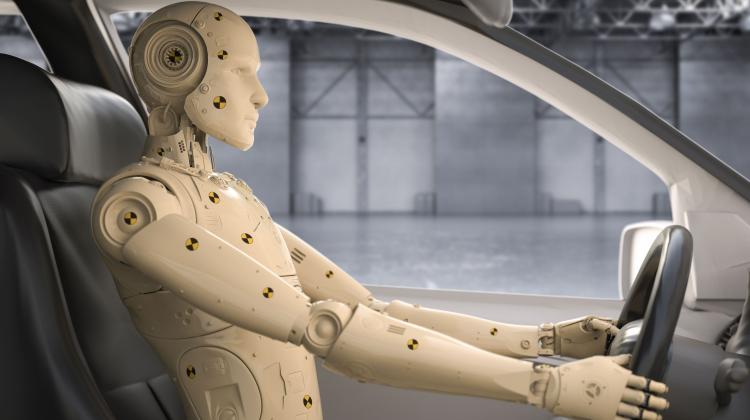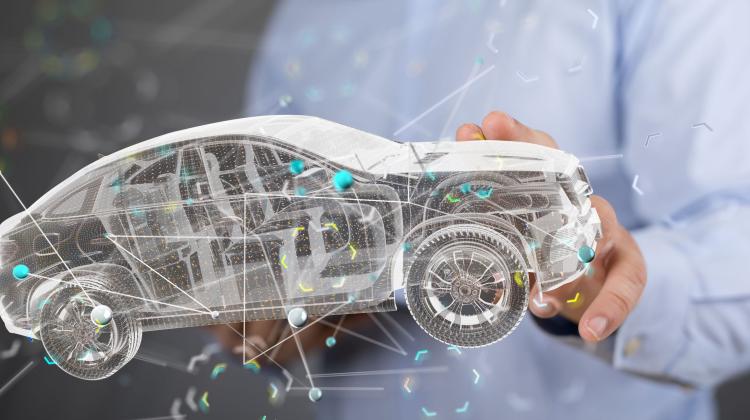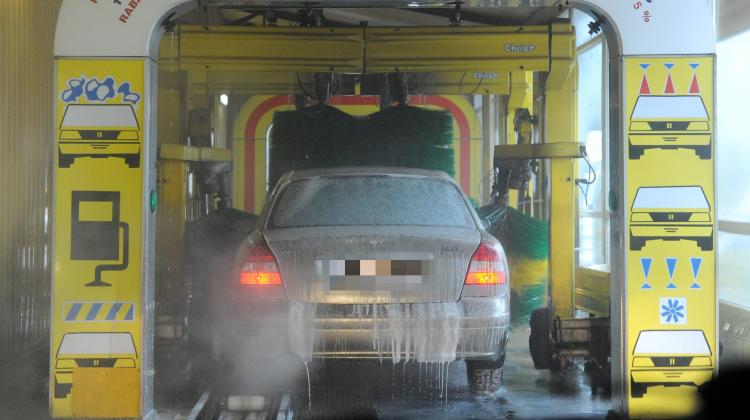Models instead of crash tests
 Credit: Adobe Stock
Credit: Adobe Stock
The risk of injury to the driver's chest is greatest during a front-to-side motorcar collision; the head is not so exposed to injuries, a doctoral candidate from the Military University of Technology determined after conducting about 400 virtual simulations of such an accident.
'Collisions in which the front of one car hits the side of another vehicle usually result from forcing or failing to yield the right of way', says Mateusz Ziubiński from the Faculty of Mechanical Engineering of the Military University of Technology, who published the results of his research in the journal Nonlinear Dynamics.
In addition to the analysis of the risk of injury, the paper also describes the deformation process of the side part of the car's body. In a front-to-side collision, the side of the body deforms much more than the front of the colliding car. This is also one of the problems of this type of road accidents.
Front-to-side collisions account for over 30% of all road accidents in Poland. Frontal collisions of cars account for only 10% of all accidents. The model developed at the Military University of Technology is expected to contribute to improving the safety of car drivers and passengers, the university reports.
The model enables simulations of extreme situations that may occur in road traffic, for example, car collisions at very high speeds, exceeding 100 km/h. For safety and cost reasons, crash tests are mainly carried out for speeds not exceeding 60 km/h.
ACCIDENTS WITH SERIOUS CONSEQUENCES
Mateusz Ziubiński explains that such accidents are dangerous because on the side of the car there is limited space for passive safety systems.
'The thickness of the side part of the body is small, due to the design and use requirements of cars - we want to have as much space inside as possible, but the width of the car affects driving comfort. This limited space is a significant challenge for car designers to prepare the body for the risk of a side impact in the best possible way', the scientist explains.
He describes that in front of the car on the way to the passenger compartment there are: bumper, longerons, engine block and a total of over a meter of bodywork, which can be deformed in a controlled manner during a collision. On the side, the passenger is only protected by the door, which is usually 20 to 30 centimetres thick.
During a side impact, structural elements on the side of the vehicle are excessively deformed and interfere with the space, in which people are located. Passengers are then exposed to chest injuries. Abdominal, pelvic and thigh injuries are also common, the scientist says.
He points out that airbags and curtain airbags do not always protect victims of a side impact or rollover. 'For the airbag to work properly, it is assumed that it will come into contact with the passenger when it is fully inflated and the pressure in it begins to decrease. Otherwise, the airbag has the opposite effect - instead of alleviating the load on the passenger, it can intensify it. Unfortunately, there are many research results that clearly indicate that due to the limited space during deformation of the side of the body, side airbags increase the risk of injury', admits the researcher from the Military University of Technology.
MODELS AND CRASH TESTS
As part of his doctoral project, Ziubiński developed a car collision model in the Matlab environment. Researchers used analytical dynamics methods with a non-linear application. The doctoral candidate worked under the supervision of Professor Leon Prochowski, in collaboration with Dr. Mirosław Gidlewski and Dr. Krzysztof Dziewiecki and the support of Dr. Jerzy Jackowski, director of the Institute of Vehicles and Transport.
Ziubiński explains that the preparation of a crash test requires a huge amount of time and work. In addition, every collision of vehicles is dangerous. There is a high risk of damage to expensive measuring equipment, and anthropomorphic mannequins used in such tests usually cost millions. That is why it is easier, cheaper and safer to conduct model research.
The scientists of the Military University of Technology searched for the relationship between the initial conditions of a front-to-side collision and the result of a road accident, predicted as the probability of injury to a passenger of a car hit on the side.
'These initial conditions are determined, for example, by the speed of the vehicles before the collision. The model reproduces the course of the side impact of a sedan. The advantage of model tests is that a large number of simulations can be carried out for various input data in a relatively short time. For example, for the purposes of this paper, I ran about 400 simulations', says Ziubiński.
FOR CAR DESIGNERS AND COURT EXPERTS
In his opinion, the research can be used to improve the passive safety of the side parts of passenger car bodies. The structure of the model allows to draw general conclusions about the impact of shaping the properties of various elements of the car body (such as the door or the roof post) on the course and effects of the collision.
'The relationship between the initial conditions of the collision and its consequences, such as deformation of the body or injuries to passengers, is important from the point of view of reconstruction of road accidents. In such a process, forensic experts, knowing the consequences of the accident, inquire about its causes. Based on the injuries of passengers, the results allow to estimate the speed at which the accident occurred. This is important, because in the statistics of road accidents +excessive speed+ most often appears as the cause of the event. Therefore, determining this speed in the reconstruction process later makes it possible to determine the culprit', emphasises Ziubiński.
The doctoral candidate is looking for scientists who would like to collaborate with him. Together with other researchers, he wants to improve the level of passive safety of the vehicle body by using modern and innovative materials in the side structure of the body, characterized by high energy dissipation during a collision, and at the same time low weight. The computer model he has prepared also enable a simulation analysis of the impact of material properties on the course and effects of a road accident.
The research results were published in Nonlinear Dynamics under the title 'Impact energy and the risk of injury to motorcar occupants in the front-to-side vehicle collision'.
PAP - Science in Poland
kol/ bar/ kap/
tr. RL
Przed dodaniem komentarza prosimy o zapoznanie z Regulaminem forum serwisu Nauka w Polsce.


















